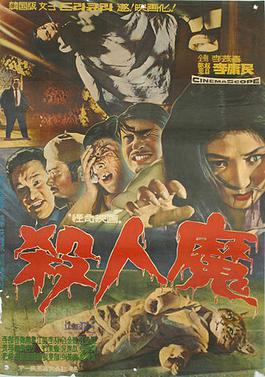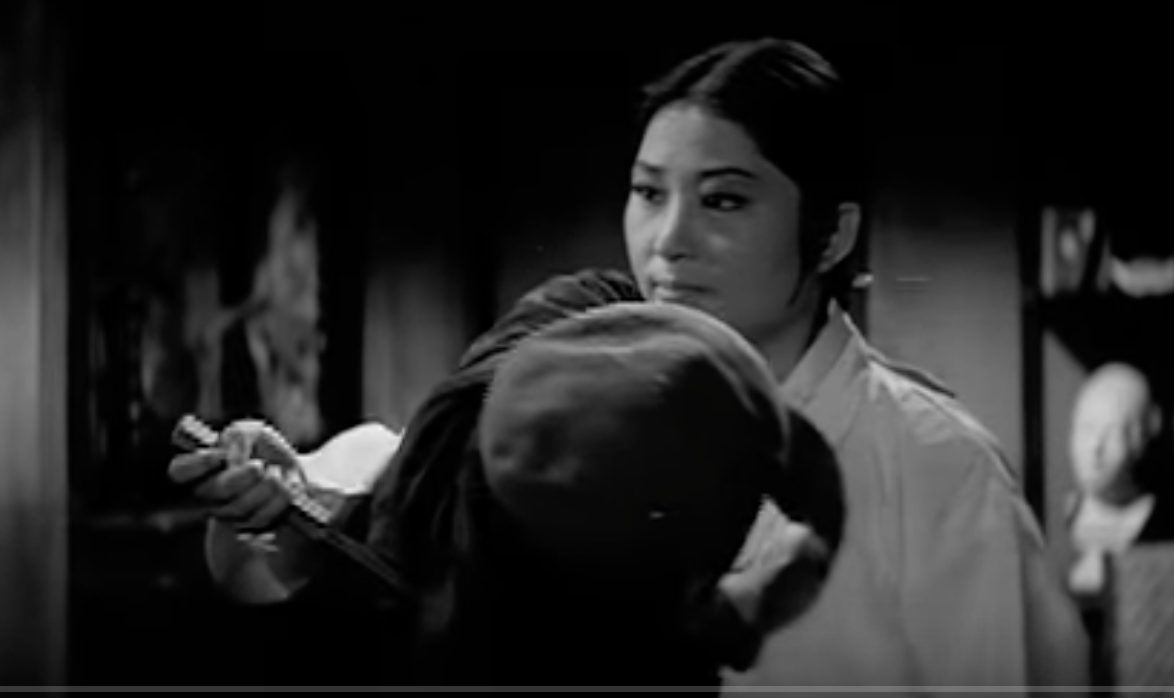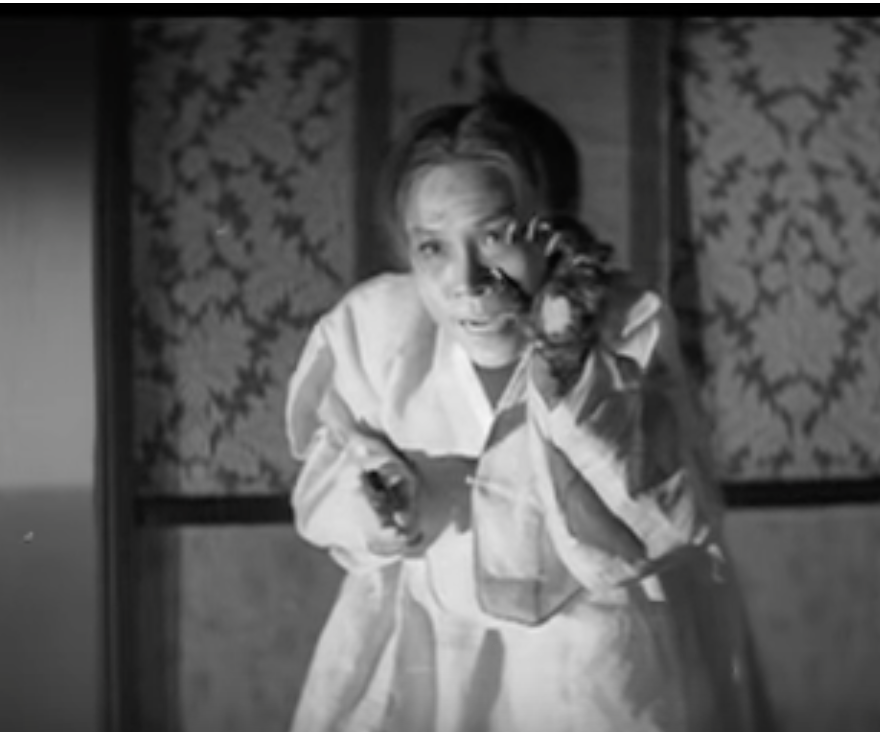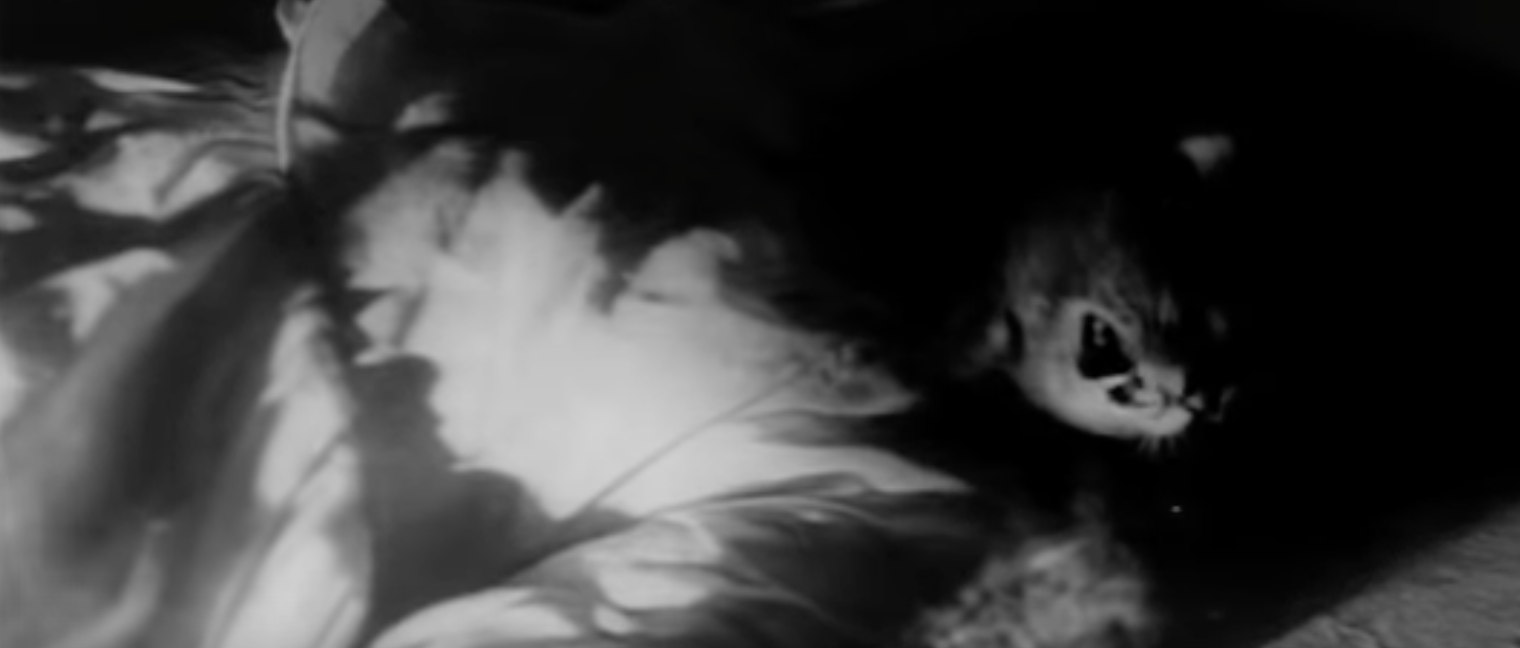
by Fiona Moore
Recently, on one of my travels to the Far East, I was invited to visit the Republic of Korea by Ewha Women’s University (the oldest women’s university in Korea, established in 1883 and therefore five years older than my own home institution, Royal Holloway College).
While there, I was able to take in a recent Korean horror movie, Sal-Inma (whose title is rendered into English variously as A Devilish Homicide and A Bloodthirsty Killer; I don’t know enough Korean to say which is the better translation).
Korean cinema is currently undergoing a strong revival, with numerous movies being produced in Korean every year and some even gaining international prominence. Sf, fantasy, and horror, which did not feature strongly in Korean popular culture before the war apart from Japanese imports, are also surging forwards, with a number of original SF novels being produced in Korean every year of this decade. However, the lack of works in translation means they are not really accessible to audiences outside the peninsula, and, similarly, the fact that the Korean film industry has made relatively few genre movies to date, means that a lot of this creativity is lost to Western audiences.

Poster for Sal-Inma (1965)
While low-budget, Sal-Inma really speaks to the creativity and abilities of Korean movie-makers and their grasp of the horror genre. The plot revolves around Lee Shi-Mak, a man with a successful business, a beautiful wife, Hye-Sook, and three children. Visiting an art exhibition, he’s astonished to see a picture of his deceased first wife, Ae-ja. Afterwards, the driver who is supposed to be taking him home, instead takes him to the house of the artist, Park Joon-Chul, who begs him to take the painting, before Ae-ja herself reappears and murders Joon-Chul. Ae-ja then collapses into inertia, seeming as if she were newly dead. Shi-Mak takes her to the family doctor, Dr Park (no relation—there are relatively few Korean surnames), who is also murdered by Ae-ja, who then disappears.
Returning home, Shi-Mak finds events continuing to unravel. Ae-ja reappears and kidnaps his older daughter. His mother is attacked by Ae-ja and subsequently starts to act like a cat; meowing, and grooming herself and her grandchildren with hands and tongue. His two younger children vanish mysteriously and a mysterious woman arrives without explanation. Ae-ja then murders Hye-Sook, and Shi-Mak, seeing that his mother’s reflection in the mirror is now that of a cat, kills her.
 Ae-ja murders Joon-Chul
Ae-ja murders Joon-Chul
And this is where things take an even more interesting turn. Grieving and confused, Shi-Mak finds a document written by Joon-Chul, which subverts everything we have seen so far about the family, revealing, in flashback, strange and sinister things about the relationship between Ae-ja, Hye-Sook, Shi-Mak’s mother, Joon-Chul, and even Dr Park. With this information, the seemingly random events of the first two-thirds of the movie fall into place, as does the identity of the mysterious new arrival, and Shi-Mak is able to resolve the situation and lay the feline ghost to rest.
A good horror movie isn’t just about the events it portrays, though, and this one has plenty to say about contemporary Korean society, struggling with its past and the pace of modernisation. Japan plays an ambivalent background role in the story: it’s implied that Shi-Mak’s mother was widowed during the Japanese occupation; the events of the flashback take place while Shi-Mak is away in Tokyo on business, and Joon-Chul later flees to Tokyo in an attempt to escape supernatural retribution for his part in the events.
Putting it together, you can see the film as being about Korea’s need to come to terms with the occupation, and that Japan continues to be a source of trouble even as Koreans also have to work with the Japanese in order to succeed economically. In the end, the message seems to be that Koreans have to understand the traumas of the past, put them behind them, and move forward.
 The cat spirit manifests through Shi-Mak's mother
The cat spirit manifests through Shi-Mak's mother
This ties in with the other major theme of the movie, the changes in the traditional Korean family structure since the occupation and in the postwar period. The Lee family seems very traditional on the face of it—man, wife, children and grandmother—and yet, we’re also shown that one of the reasons Shi-Mak’s mother turned against Ae-ja was her childlessness, and that Shi-Mak’s mother was herself engaged in a love affair without her son knowing. An insistence on traditional family structure thus only comes at the price of violence, and is a hypocritical position in any case. The end of the movie not only suggests that Shi-Mak’s family life will become far less traditional in the future, but also that this is approved of, even endorsed, by Buddhist religious figures.
The movie contains a few logic holes, but it also uses its low budget well. The effects suggesting that Shi-Mak’s mother has been possessed by a cat spirit could have been risible, but they’re sparingly and effectively used and are quite shocking in the end. Certainly if Korea is capable of this sort of genre movie-making, they’ll be a rival to the Japanese powerhouse in a few years. Four out of five stars.
 Cat spirit revelation
Cat spirit revelation
Korea itself is currently struggling to recover from a very difficult first half of the 20th century. Following the Japanese occupation and the devastating Korean War, the Republic has been governed by a succession of authoritarian regimes; the current leader, Park Chung-Hee, is a general who seized power following a student revolution in the early 1960s. However, despite widespread dislike of Park’s dictatorial style and his decision to bring Korea into the Vietnam War as a US ally, he is certainly bringing modernisation to the country through projects like developing transport infrastructure, and a policy of focusing on consumer exports.
And from a genre perspective, things are certainly looking up. Serialised SF by the likes of Han Nak-Won is winning over the young people, and a prestigious mystery fiction prize was recently won by a short story authored by Moon Yoon-Sung; a story which takes place in a 22nd century where only women survive. The country’s first official SF group, the Korean Sci-Fi Writers’ Club, was established by Seo Gwang-Woon just last year, and hope to publish their first collection soon. I would advise all fans of Asian SF to keep their eye on the peninsula for future developments.

The bustling capital of South Korea: Seoul

![[August 12, 1969] Cat’s Got Your Tongue: Sal-Inma (A Devilish Homicide) (1965) & Report From South Korea](https://galacticjourney.org/wp-content/uploads/2024/08/A_Devilish_Homicide-265x372.jpg)
